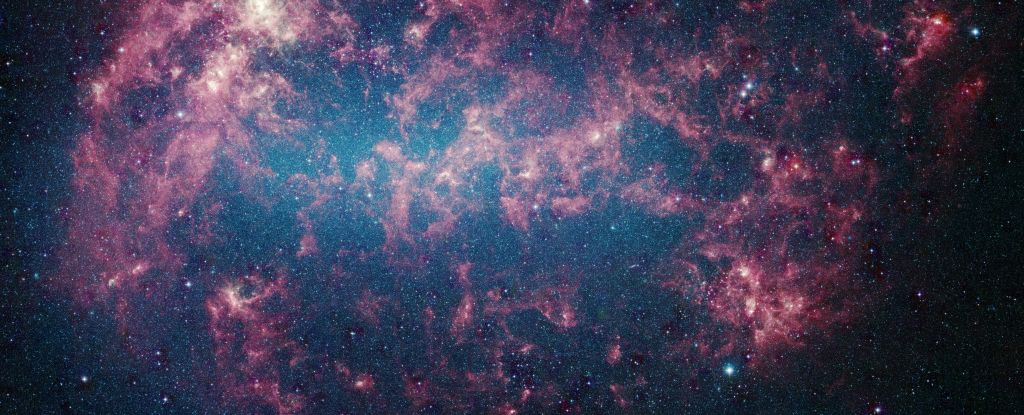Products You May Like
A search for the first stars that winked into existence at the dawn of the Universe has yielded one of the oldest stars we’ve found yet, right next door to our own galaxy.
It’s not quite a member of the first stellar generation. This glimmer in the darkness, known as LMC 119, was spotted in the Large Magellanic Cloud that orbits the Milky Way, and it’s the first star from the Universe’s second generation that’s been found in another galaxy.
“This star provides a unique window into the very early element-forming process in galaxies other than our own,” says astrophysicist Anirudh Chiti of the University of Chicago, who led the research.
“We have built up an idea of how these stars that were chemically enriched by the first stars look like in the Milky Way, but we don’t yet know if some of these signatures are unique, or if things happened similarly across other galaxies.”

The first stars in the Universe didn’t have a diverse range of materials to work with. They formed from the clouds of hydrogen and helium that coalesced in the early Universe in the wake of the Big Bang, turning their cores into fusion machines that blazed light across the darkness.
It was these stars, smashing hydrogen into helium, and then helium into carbon, and so on, all the way up to iron for the most massive stars, that started the production of the periodic table of elements in the Universe. The stars’ violent explosions and collisions produced even heavier elements.
Once these elements were out there in the Universe, they were taken up into subsequent generations of stars. A star’s metallicity is one of the gauges that astronomers use to tell its age; lower quantities of metals in a star’s composition mean that it was born earlier in the Universe, when there was much less metal around.

The Holy Grail would be stars with no metallicity whatsoever – those of the first generation. But none have been found yet. We think it’s because most of those first stars were so huge that they burned out and died extremely quickly.
What we have found in the Milky Way is stars astronomers think belong to the second generation – with so little metallicity that they must have been born only from the material that was left after the first generation exploded into stardust.
They are extremely rare – less than one star in 100,000 is a second-generation star – but they’re worth looking for, the researchers say. And finding one outside the Milky Way might tell us if the materials floating around the early Universe were evenly distributed.
“In their outer layers, these stars preserve the elements near where they formed,” Chiti says. “If you can find a very old star and get its chemical composition, you can understand what the chemical composition of the universe was like where that star formed, billions of years ago.”
To find extragalactic ancient stars, Chiti and his colleagues turned their attention to the Large Magellanic Cloud, a satellite of the Milky Way that orbits at a distance of around 160,000 light-years. This is where they found LMC 119, a star so poor in heavier elements that it must be a member of the second generation of stars.

Interestingly, the team found in LMC 119 one of the answers they were looking for. It does differ in composition to the Milky Way second-generation stars – it has significantly less carbon and iron.
“That was very intriguing, and it suggests that perhaps carbon enhancement of the earliest generation, as we see in the Milky Way, was not universal. We’ll have to do further studies, but it suggests there are differences from place to place,” Chiti says.
“I think we’re filling out the picture of what the early element enrichment process looked like in different environments.”
The researchers believe more of these ancient stars might be lurking out there in the Large Magellanic Cloud. Finding them could yield new clues about the infancy of the Universe, and the differences in evolutionary paths taken by stars separated across space and time.
The research has been published in Nature Astronomy.
